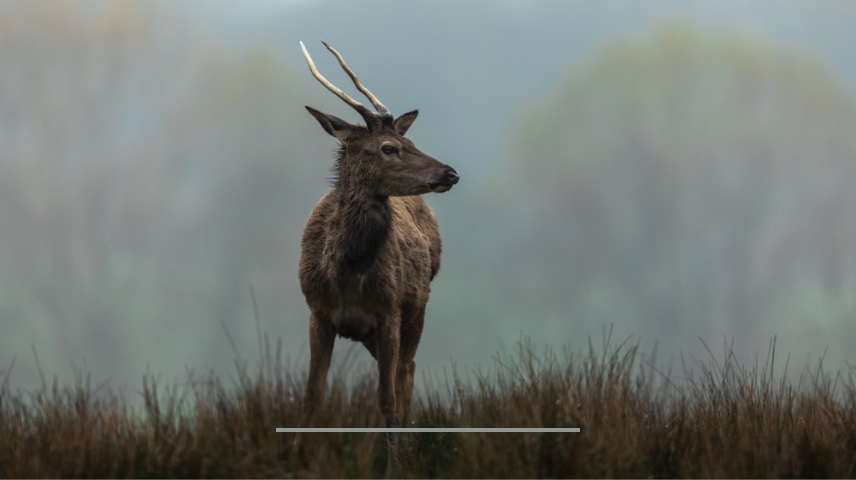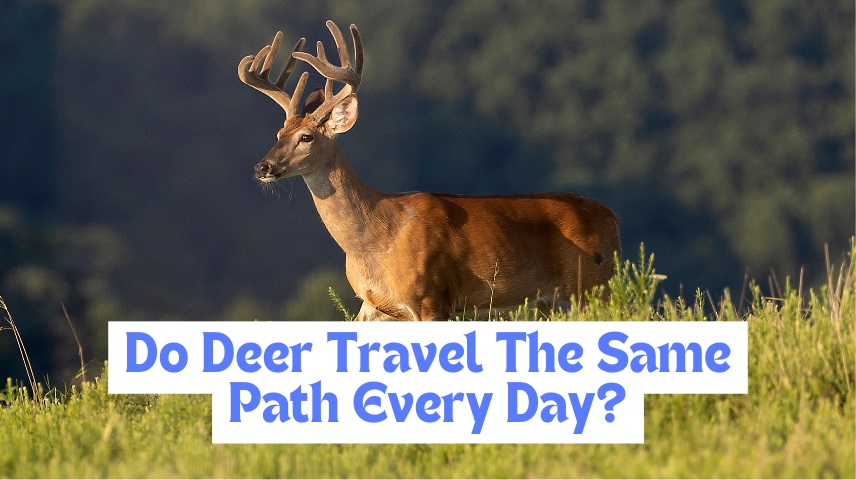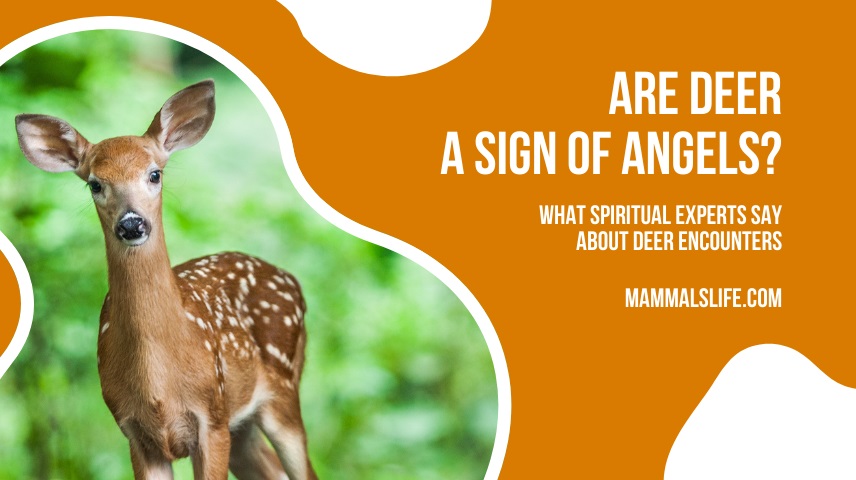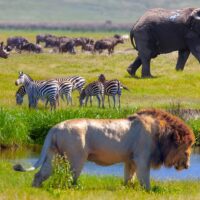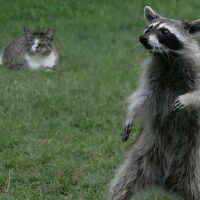Last Updated on February 22, 2025 by Mammals Life
Imagine stepping into a dense forest just as the first drops of rain begin to fall. The air is thick with the scent of wet earth, and the soft patter of rain against the leaves creates a serene ambiance. In these moments, many might wonder, “What do the forest’s inhabitants do when it rains?” Specifically, how do deer, known for their cautious and elusive nature, respond to the rain? Understanding deer behavior, particularly during various weather conditions, is crucial for wildlife enthusiasts, hunters, and conservationists alike. This article delves into whether deer move in the rain and what insights wildlife experts have to offer on this subject.
Deer Behavior
Deer are creatures of habit, following specific movement patterns dictated by their needs for food, safety, and reproduction. Typically, deer are most active during the early morning and late evening, times known as crepuscular hours. During these periods, they move to feeding areas, browse for food, and remain vigilant for predators. However, deer are highly adaptable and adjust their movements based on environmental factors, including weather conditions.
Weather plays a significant role in influencing deer behavior. For example, deer are known to move less during windy conditions, as the noise and scent disruptions make it difficult for them to detect predators. In contrast, cooler temperatures during the rut (mating season) often lead to increased movement as bucks seek out does. But what happens when it rains? Does rain deter or encourage deer movement?
Do Deer Move in the Rain?
From a scientific perspective, rain can have both positive and negative effects on deer movement. Rain, particularly light rain, is known to muffle sounds in the forest, providing deer with a quieter environment that may encourage movement. Additionally, rain can reduce the effectiveness of a deer’s natural predators, as their scent and sound are also dampened, making it harder for predators to track them. This can lead to deer feeling more secure and, therefore, more likely to move during light rain.
However, heavy rain presents a different scenario. According to wildlife experts, heavy rain can be disorienting for deer. The loud noise of rain hitting the ground and vegetation can overwhelm their acute hearing, making it difficult for them to detect approaching danger. Moreover, the reduced visibility during heavy rain can cause deer to seek shelter rather than move about. This is why heavy rain often results in reduced deer activity, with deer hunkering down in thick cover until the rain subsides.
Experts also highlight the variability in deer behavior based on regional differences. In areas where rain is a common occurrence, deer may be more accustomed to moving in the rain compared to regions where rain is less frequent.
Types of Rain and Deer Movement
Light Rain
Light rain is generally less disruptive to deer, and in some cases, it may even promote movement. The gentle patter of light rain can soften the forest floor, allowing deer to move more quietly and confidently. This type of rain also reduces human scent, which can be an advantage for hunters looking to remain undetected. As a result, during light rain, deer are often observed continuing their regular activities, such as foraging and traveling between bedding and feeding areas.
Heavy Rain
In contrast, heavy rain can significantly alter deer behavior. The noise and intensity of heavy rain can be overwhelming, leading deer to seek shelter in dense brush or wooded areas where they feel more secure. During such conditions, deer are less likely to be seen moving, as they prefer to wait out the storm in a safe location. This behavior is particularly evident in regions with occasional heavy downpours, where deer may be less adapted to frequent rainfall.
Case Studies & Real-Life Observations
Wildlife Studies
Numerous wildlife studies have been conducted to observe deer movement in weather conditions. A study published in the Journal of Wildlife Management found that deer movement tends to decrease during heavy rain and increase after the rain stops, particularly during light rain or drizzle. Researchers observed that deer are more likely to be active during light rain, possibly due to the reduced noise and scent disruption.
Hunter Observations
Hunters have long provided anecdotal evidence regarding deer movement during rain. Many experienced hunters suggest that light rain is an excellent time to hunt, as deer are often more active and less wary during these conditions. On the other hand, heavy rain is usually considered a less favorable time for hunting, as deer tend to hunker down and minimize their movement.
Practical Implications for Wildlife Management & Hunting
Wildlife Management
Understanding how rain affects deer movement is essential for wildlife management, particularly in the context of conservation efforts. Wildlife managers can use this knowledge to predict deer behavior and adjust strategies for habitat management, hunting seasons, and population control. For instance, knowing that deer are less active during heavy rain can help in planning controlled hunts or implementing conservation measures during specific weather conditions.
Hunting Strategies
For hunters, weather plays a critical role in planning a successful hunt. Light rain can offer an advantage, as deer are likely to move more and be less cautious, allowing hunters to get closer without being detected. However, during heavy rain, hunters might find it more challenging to locate deer, as the animals are more likely to remain in cover. Therefore, hunters should adjust their strategies based on the type and intensity of the rain, opting for ground blinds or still-hunting techniques during lighter rain, and perhaps postponing hunts during heavy downpours.
FAQs
Do deer move more during light rain compared to heavy rain?
Yes, deer are more likely to move during light rain as it reduces noise and scent, making them feel safer. Light rain also softens the ground, allowing deer to move quietly. In contrast, heavy rain can be disorienting, leading deer to seek shelter and reduce their movement.
Why do deer reduce their movement during heavy rain?
Deer tend to reduce their movement during heavy rain because the loud noise and reduced visibility can make it difficult for them to detect predators. The overwhelming sensory input during heavy rain often causes deer to hunker down in dense cover until the weather improves.
Is it a good idea to hunt deer during the rain?
Hunting during light rain can be advantageous because deer are often more active and less wary. However, heavy rain is generally less favorable for hunting as deer are more likely to remain in cover, making them harder to locate. Hunters should adjust their strategies based on the intensity of the rain.
Does rain affect a deer’s ability to detect predators?
Yes, rain can affect a deer’s ability to detect predators. Light rain can dampen sounds and reduce the scent trail of predators, making it harder for them to track deer. This can give deer a false sense of security, encouraging movement. However, heavy rain can overwhelm a deer’s senses, leading them to stay in place.
How does regional climate affect deer movement in the rain?
Deer in regions with frequent rain are more likely to be accustomed to moving in wet conditions, while deer in areas with less rain may be more sensitive to it. Regional climate can influence how deer respond to rain, with some populations being more active during rain than others, depending on their adaptation to local weather patterns.
Conclusion
In conclusion, while rain does influence deer movement, the type and intensity of the rain are crucial factors. Light rain often leads to increased activity as deer take advantage of the quieter and more scent-neutral environment. In contrast, heavy rain generally causes deer to seek shelter and remain inactive until the weather improves. By understanding these patterns, wildlife enthusiasts, hunters, and conservationists can make more informed decisions about deer behavior and management. As always, observing local deer populations and consulting with wildlife experts can provide additional insights tailored to specific regions.

